The Origins of Bodybuilding: From Ancient Sculptures to the Bronze and Silver Eras (Bodybuilding History Part 1)
Bodybuilding is more than just a sport or a hobby. It is a way of life that has a rich and fascinating history. But how much do you really know about the origins and evolution of bodybuilding? How did it influence and get influenced by culture, science, and art throughout the centuries? Who were the legendary bodybuilders who shaped the sport and inspired generations of fans and followers?
In this series of articles, we will explore these questions and more, as we take you on a journey through bodybuilding history. We will uncover the secrets and stories behind the most amazing physiques ever created, from the ancient times to the modern trends.
In this first article, we will focus on the early stages of bodybuilding, from the ancient times to the early 20th century. This period covers the Ancient Era, the Bronze Era, and the Silver Era of bodybuilding. We will see how bodybuilding emerged from the practices of physical culture, strength training, and aesthetic beauty in various civilizations. We will also meet the pioneers of bodybuilding, such as Eugen Sandow, Charles Atlas, John Grimek and Steve Reeves, who set the standards and popularized the sport.
Are you ready to dive into the fascinating world of bodybuilding history? Then read on and discover how it all began.
The Ancient Era: How Bodybuilding Began in the Old World
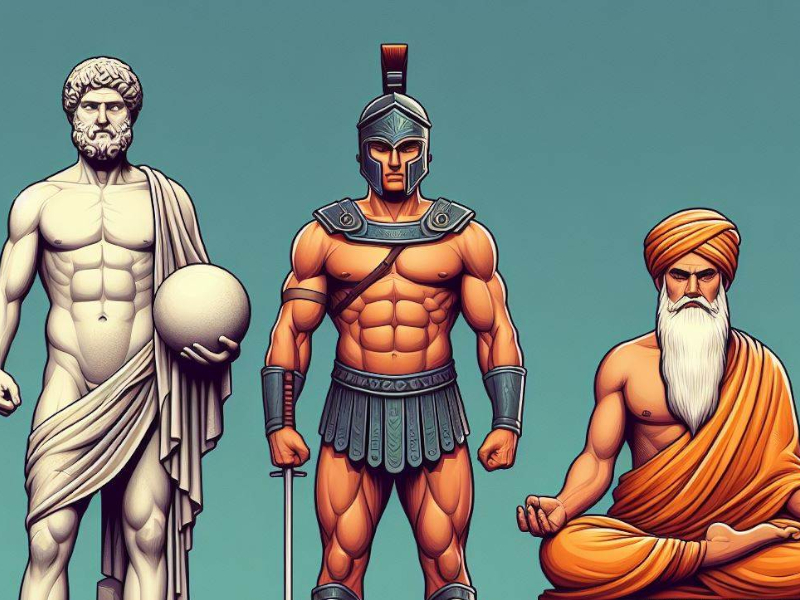
The Greek Ideal: Sculpting the Perfect Body
The ancient Greeks were fascinated by the human body and its potential for physical excellence. They believed that a fit and harmonious body reflected a healthy and virtuous mind. They also admired the beauty and proportion of the human form, as seen in their sculptures, paintings, and literature. They created idealized images of gods, heroes, and athletes, who embodied the qualities of strength, courage, and grace.
One of the most famous examples of bodybuilding in ancient Greece is the story of Milo of Croton, a legendary wrestler and athlete who lived in the 6th century BC. Milo was said to have trained by carrying a calf on his shoulders every day, until it grew into a bull. He also ate large amounts of meat and bread, and drank wine mixed with honey. He won six Olympic crowns and many other prizes in various competitions. He was renowned for his muscular physique and his feats of strength, such as breaking a band of iron with his fingers, or holding his arm outstretched while no one could bend it.
Milo was not the only bodybuilder in ancient Greece. Many other athletes and warriors followed similar training methods and diets, such as lifting heavy stones, swinging clubs, running, wrestling, boxing, and throwing. They also participated in festivals and games, such as the Olympics, the Pythian, the Nemean, and the Isthmian, where they competed and displayed their skills and bodies. They also sought the advice and guidance of trainers, doctors, and philosophers, who taught them the principles and techniques of physical culture.
The Roman Arena: Fighting for Glory and Survival
The ancient Romans were influenced by the Greeks, but they also developed their own form of physical culture: gladiatorial combat. The gladiators were mostly slaves or criminals who trained and fought in the arena, often to the death. They used different weapons and styles, depending on their class and category. They followed a strict diet and regimen, and sometimes used supplements and potions. They were admired and feared by the public, and some became famous and rebellious. However, most of them died young and violently. Gladiatorial combat was a precursor to bodybuilding, as it required the development and display of muscular strength and endurance, as well as the mastery of various skills and techniques.
The Indian Tradition: Building Strength and Spirit
The ancient Indians practiced bodybuilding as a way of enhancing their health, stamina, and power. They also linked it to their spiritual and religious beliefs. They used various forms of yoga, meditation, breathing, and cleansing techniques, which aimed to balance the body, mind, and soul. They also used heavy clubs and stones, known as Nals or Joris, to perform various exercises and feats of strength. They also used bodyweight exercises, or calisthenics, to prepare for warfare and improve their fitness. Bodybuilders were respected and admired by the society, and often participated in festivals and competitions. They also sought the advice and guidance of gurus, or teachers, who taught them the principles and techniques of physical culture. Bodybuilding in ancient India was a way of life that integrated physical, mental, and spiritual aspects. It was also a form of service, as bodybuilders used their strength and skills to protect and serve their communities.
Other Examples: Bodybuilding Across the Ancient World
Many other cultures and regions also practiced physical culture and strength training, such as the ancient Egyptians, who built pyramids and monuments, and depicted their Pharaohs with muscular bodies. The ancient Chinese also developed martial arts, such as kung fu, which involved strength and flexibility training. The ancient Persians also had elite warriors, known as the Immortals, who trained with heavy weapons and armor. They also had a hero, Rostam, who had superhuman strength and courage. There are many more examples of bodybuilding in the ancient world, such as the Celts, the Vikings, the Mongols, the Aztecs, and the Polynesians. Each of them had their own methods, motivations, and legends, which contributed to the rich and diverse history of bodybuilding.
The Renaissance: A Revival of Bodybuilding
The Renaissance was a groundbreaking period in history that spanned from the 14th to the 17th century, marking a major shift in the cultural and intellectual landscape of Europe. It was characterized by a renewed interest in the arts, literature, science, and philosophy, fueled by a desire to rediscover the knowledge of ancient civilization. The Renaissance also sparked a revival of bodybuilding, as artists and scholars looked back to the classical ideals of beauty and proportion, based on the golden ratio and the ratio of lengths of body parts to each other, which governed the depictions of male and female figures. Many Renaissance artists, such as Leonardo da Vinci, Michelangelo, and Raphael, studied anatomy and physiology, and created realistic and idealized representations of the human body in their paintings and sculptures. They also influenced the physical culture of the time, as many people sought to emulate their aesthetic standards and improve their health and fitness. The Renaissance paved the way for the Bronze Era of bodybuilding, which began in the late 19th century, when the first bodybuilding competitions and shows were held.
The Bronze Era: How Bodybuilding Became a Distinct and Popular Sport
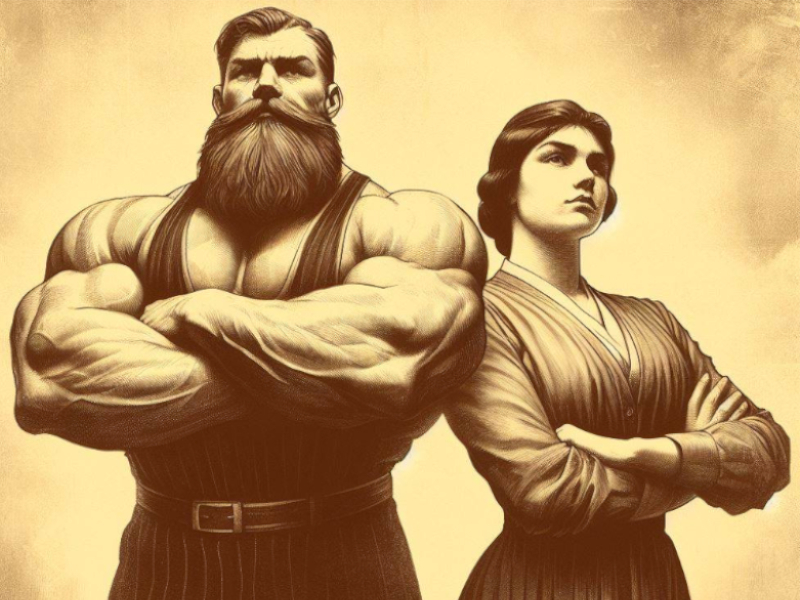
The Bronze Era of bodybuilding, from the late 19th century to the end of the 1930s, was a significant period in the history of the sport. It was when bodybuilding emerged from strength exhibitions and circus shows, and became a popular form of physical culture. It was also when bodybuilding pioneers, such as Eugen Sandow, George Hackenschmidt, and Charles Atlas, set the standards and popularized the sport. They used innovative training methods, diets, and supplements, and their physiques and feats of strength attracted millions of fans and followers. They also influenced the culture and society of the time, as bodybuilding became a symbol of health, beauty, and success.
The Strongmen and Strongwomen: The Forerunners of Bodybuilding
Before bodybuilding became a distinct and popular sport, it was closely associated with the strongman and strongwoman, who were the performers and entertainers of the late 19th and early 20th centuries. They amazed the audiences with their incredible feats of strength and endurance, such as lifting heavy weights, bending iron bars, breaking chains, and tearing cards. They also displayed their muscular and impressive physiques, which were often enhanced by costumes and poses. Some of the most famous and influential strongmen and strongwomen of this era include Eugen Sandow, George Hackenschmidt, Louis Cyr, Katie Sandwina, and Apollon. They were the forerunners of bodybuilding, as they inspired and taught many of the bodybuilders who followed them. They also contributed to the development of the equipment, methods, and standards of bodybuilding.
The Stars of the Bronze Era: Eugen Sandow, George Hackenschmidt, and Charles Atlas
The Bronze Era of bodybuilding produced some of the most influential and celebrated figures in the history of the sport. Among them, Eugen Sandow, George Hackenschmidt, and Charles Atlas stand out as the stars of this era, who set the standards and popularized the sport.
Eugen Sandow, often referred to as “The Father of Modern Bodybuilding”, was a German bodybuilder and showman who lived from 1867 to 1925. He was the first to emphasize physique display rather than lifting prowess, and created the first bodybuilding competition in 1901. He also developed a system of progressive resistance exercise, and published several books and magazines on physical culture. He was renowned for his muscular and symmetrical physique, which was considered the epitome of male aesthetic beauty. He also performed amazing feats of strength, such as breaking chains, bending iron bars, and tearing cards. He inspired and taught many of the bodybuilders who followed him, and influenced the culture and society of his time.
George Hackenschmidt, also known as “The Russian Lion”, was a Russian bodybuilder and wrestler who lived from 1877 to 1968. He was one of the strongest men of his era, and held several world records in weightlifting. He also excelled in wrestling, and became the first world heavyweight champion in 1905. He combined weightlifting and wrestling to create a unique approach to physical culture, and wrote several books on the subject. He was admired for his strength and skill, as well as his physique, which was muscular and athletic. He also influenced the future of bodybuilding, as he introduced the hack squat, a popular exercise that bears his name.
Charles Atlas, born Angelo Siciliano in Italy, was an American bodybuilder and fitness guru who lived from 1892 to 1972. He was a symbol of the Bronze Era’s focus on aesthetics and health, and won the title of “World’s Most Perfectly Developed Man” in 1922. He created a mail-order fitness program, the Dynamic-Tension exercise system, that became widely popular. His program consisted of a series of self-resistance exercises, which used the body’s own weight and tension to build muscle and strength. He also used motivational and inspirational messages, such as “Don’t let them kick sand in your face”, to encourage his clients to improve their physique and confidence. He influenced millions of people, not only in bodybuilding, but also in physical fitness and self-improvement.
These are just some of the highlights of the achievements and contributions of Eugen Sandow, George Hackenschmidt, and Charles Atlas, the stars of the Bronze Era of bodybuilding. They were the pioneers and innovators of the sport, and their legacy lives on in the bodybuilding industry and culture.
The Muscle Magazines: How Bodybuilding Reached the Masses
One of the most important factors that contributed to the rise and recognition of bodybuilding in the Bronze Era was the emergence of “muscle magazines”. These were the publications that featured articles, photos, and advertisements related to bodybuilding and physical culture. They were the main source of information and inspiration for bodybuilders and enthusiasts, as well as the general public. The first muscle magazine was Physical Culture, founded by Eugen Sandow in 1899. It was followed by many others, such as Strength and Health, Your Physique, Iron Man, and Muscle Power. These magazines showcased the achievements and stories of the bodybuilding stars, such as George Hackenschmidt, Charles Atlas and John Grimek. They also introduced new training methods, diets, and supplements, and offered advice and guidance for bodybuilders of all levels. They also organized and reported on the bodybuilding competitions and shows, such as the Mr. America and the Mr. Universe. The muscle magazines helped to create a global bodybuilding community, and to make bodybuilding a popular and respected sport and art.
The Silver Era: How Bodybuilding Reached New Heights of Popularity and Aesthetics
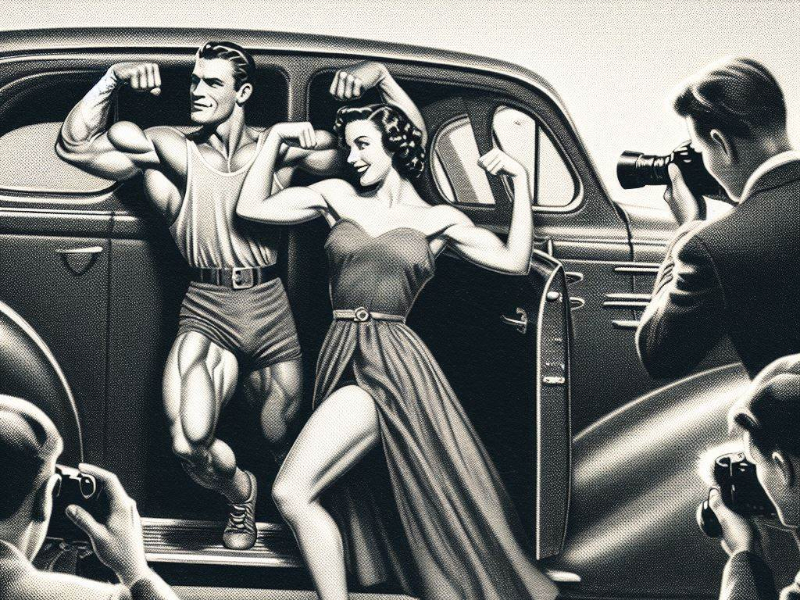
The Silver Era of bodybuilding, which spanned from the 1940s to the 1950s, was a remarkable period in the history of the sport. It was when bodybuilding reached new heights of popularity and recognition, thanks to the champions and celebrities of the era, such as Steve Reeves, John Grimek, Reg Park, and Clarence Ross. They dominated the bodybuilding scene and inspired millions of fans with their muscular and aesthetic physiques, which were considered the ideal of male beauty. They also made their way into movies and magazines, and became icons of the sport and the culture. The Silver Era was also a time when bodybuilding was mostly natural, as performance-enhancing drugs (PEDs) were not widely available or used until the late 1950s/early 1960s. The Silver Era athletes achieved their impressive physiques through hard work, dedication, and natural methods, such as training, diet, and supplements. They were the role models and mentors of many bodybuilders who followed them, and their legacy lives on in the bodybuilding industry and culture.
The Bodybuilding Revolution: How the Silver Era Transformed the Sport and the Culture
The Silver Era of bodybuilding was a turning point in the history of the sport. It was when bodybuilding stepped out of the shadow of strength exhibitions and circus shows, and defined itself as its own sport, with its own standards and competitions. It was when bodybuilding leaders and promoters created and supported the bodybuilding federations, which organized and regulated the events that became the most prestigious and coveted titles in the sport, such as the Mr. America and the Mr. Universe. These events attracted and showcased the best bodybuilders of the era, such as Steve Reeves, John Grimek, Reg Park, and Clarence Ross, who set the benchmarks for the sport with their muscular and aesthetic physiques. These events also drew millions of fans and followers, who admired and supported the bodybuilders and the sport. The Silver Era of bodybuilding transformed the sport and the culture, and made bodybuilding a global phenomenon, and a respected and recognized discipline.
The Champions and Celebrities of Bodybuilding: Steve Reeves, John Grimek, Reg Park, Clarence Ross, and Abby Stockton
The Silver Era of bodybuilding was also a time when bodybuilding stars became celebrities and role models, not only in the sport, but also in the media and the society. Among them, Steve Reeves, John Grimek, Reg Park, Clarence Ross, and Abby Stockton stand out as the champions and celebrities of bodybuilding, who achieved fame and success in various fields and domains.
Steve Reeves, born in 1926 in Montana, was one of the most popular and influential bodybuilders of all time. He won the Mr. America in 1947, the Mr. World in 1948, and the Mr. Universe in 1950. He was admired for his muscular and symmetrical physique, which was considered the ideal of male beauty. He also had a successful career as an actor, starring in several action movies. He was one of the first bodybuilders to cross over into mainstream cinema, and paved the way for future stars of the sport.
John Grimek, born in 1910 in New Jersey, was another legendary bodybuilder and athlete, who excelled in both bodybuilding and weightlifting. He won the Mr. America in 1940 and 1941, and the Mr. Universe in 1948. He was also an Olympic weightlifter, who competed in the 1936 Games in Berlin. He was renowned for his strength and skill, as well as his physique, which was muscular and athletic. He was also a pioneer of bodybuilding, as he introduced new training methods, such as full-body workouts, and advocated for natural bodybuilding. He was a role model and mentor for many bodybuilders who followed him, and influenced the sport and the culture.
Reg Park, born in 1928 in England, was another influential and successful bodybuilder and actor, who dominated the bodybuilding scene in the 1950s. He won the Mr. Britain in 1949, the Mr. Europe in 1950, and the Mr. Universe in 1951, 1958, and 1965. He was admired for his strength and power, as well as his physique, which was massive and impressive. He also had a successful career as an actor, starring in several action movies. He was also a mentor and inspiration for many bodybuilders, especially Arnold Schwarzenegger, who considered him his idol and friend.
Clarence Ross, born in 1923 in California, was another prominent and popular bodybuilder and actor, who won several titles and awards in the sport. He won the Mr. America in 1945, the Mr. USA in 1948, and the Mr. Universe in 1955. He was admired for his physique, which was balanced and proportionate. He also had a brief career as an actor, appearing in a few movies. He was also a writer and a teacher, who wrote several articles and books on bodybuilding and fitness. He was a respected and recognized figure in the bodybuilding industry and community.
Abby Stockton, born in 1917 in New York, was one of the first and most influential female bodybuilders and athletes, who broke the stereotypes and barriers of the sport. She was a regular performer and exhibitor at the original Muscle Beach in Santa Monica, where she amazed the crowds with her hand-balancing and weightlifting skills. She also competed in several bodybuilding and weightlifting contests, such as the Miss Physical Culture Venus in 1948, and the World’s Women’s Weightlifting Championship in 1949. She was admired for her strength and grace, as well as her physique, which was muscular and feminine. She also founded and edited the first women’s fitness magazine, Strength and Health for Women. She was a pioneer and a leader of women’s bodybuilding and physical culture.
These are just some of the highlights of the achievements and contributions of Steve Reeves, John Grimek, Reg Park, Clarence Ross, and Abby Stockton, the champions and celebrities of bodybuilding in the Silver Era. They were the icons and idols of the sport, and their legacy lives on in the bodybuilding industry and culture.
The Hollywood Dream: How the Silver Era Bodybuilders Transitioned from the Stage to the Screen
The Silver Era of bodybuilding was also a time when bodybuilders transitioned from the stage to the screen, and became popular and successful actors. They used their impressive physiques and charismatic personalities to land roles in various genres, especially action and adventure films. They also introduced and exposed the sport of bodybuilding to a wider and global audience, and inspired many people to pursue fitness and bodybuilding.
Two of the most prominent bodybuilders of that era, Steve Reeves and Reg Park, became bona fide movie stars, especially in the genre of sword and sandal films. They played legendary heroes such as Hercules, Ulysses, and Samson, and dazzled the audiences with their muscular and heroic portrayals.
The Silver Era of bodybuilding was not only a time of great achievements and innovations in the sport, but also a time of great exposure and popularity in the media. The bodybuilders of that era used their muscular and heroic images to star in various films, especially in the genre of sword and sandal. They were the pioneers and trailblazers of bodybuilding, who inspired many people to pursue fitness and bodybuilding as a lifestyle.
Celebrating the Early Stages of Bodybuilding History
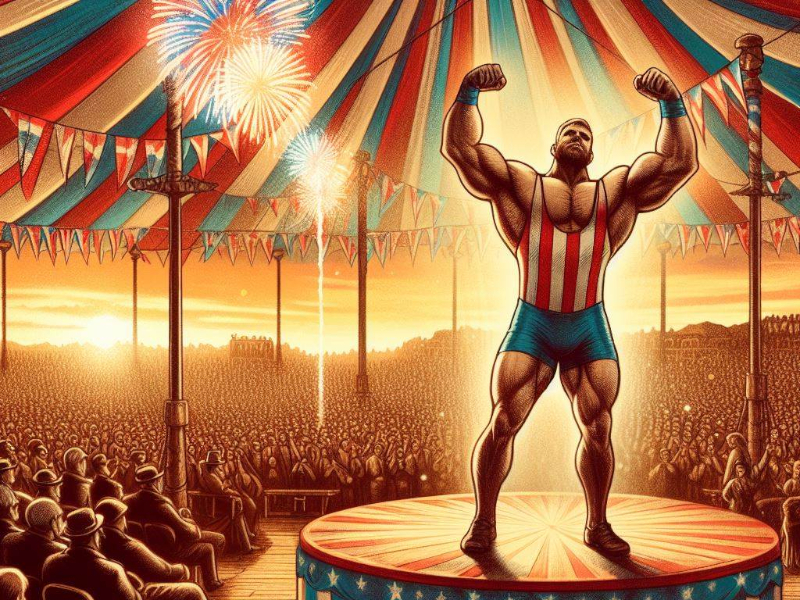
In this article, we have explored the origins and evolution of bodybuilding, from the ancient times to the early 20th century. We have seen how bodybuilding emerged from the practices of physical culture, strength training, and aesthetic beauty in various civilizations. We have also met the pioneers of bodybuilding, who set the standards and popularized the sport. They include Eugen Sandow, Charles Atlas, John Grimek and Steve Reeves, who were among the first bodybuilders to achieve fame and recognition in various fields, such as movies, magazines, and competitions.
This period covers the Ancient Era, the Bronze Era, and the Silver Era of bodybuilding. Each era had its own characteristics, challenges, and achievements, and contributed to the development and growth of the sport. The Silver Era of bodybuilding was especially influential, as it brought the sport to the mainstream and inspired generations of fitness enthusiasts. It also laid the foundations for the coming Golden Era of bodybuilding, which will be the focus of the next article in this series.
We hope you enjoyed this article and learned something new about bodybuilding history. If you want to stay updated and join our online community, please follow us on Instagram and join our Facebook Group. There you can find more tips, discussions, and exclusive content on all things natural bodybuilding. You can also learn more about our natural bodybuilding competitions, where we promote and celebrate the sport in a fair and drug-free way. Thank you for reading and stay tuned for the next article.

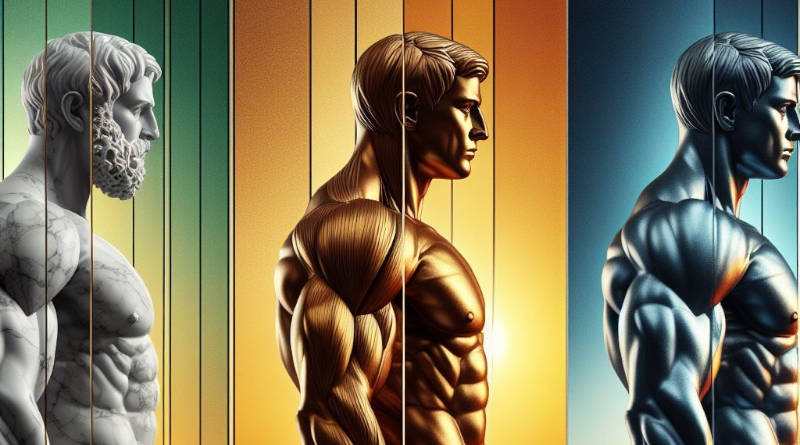
Pingback:Bodybuilding History (Part 2): The Golden Era - 60s, 70s & 80s
Pingback:Albury Natural Bodybuilding & Bodysculpting Pro's